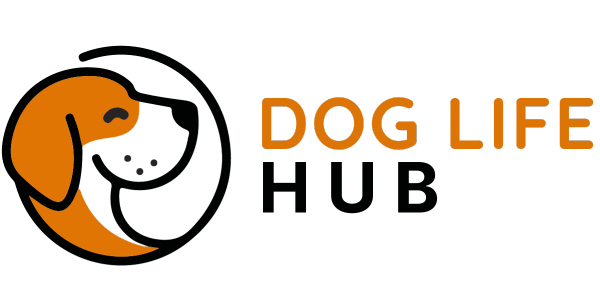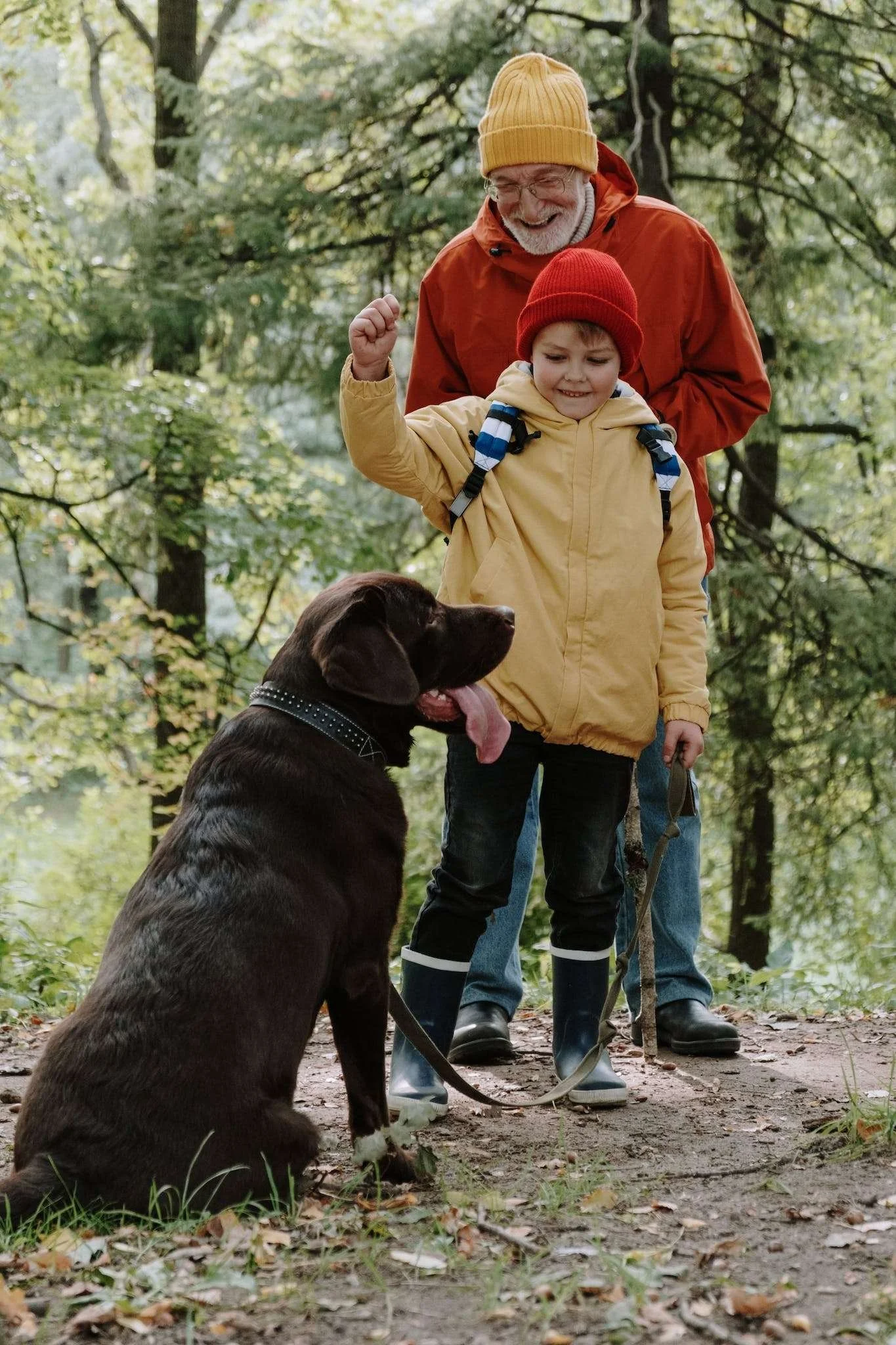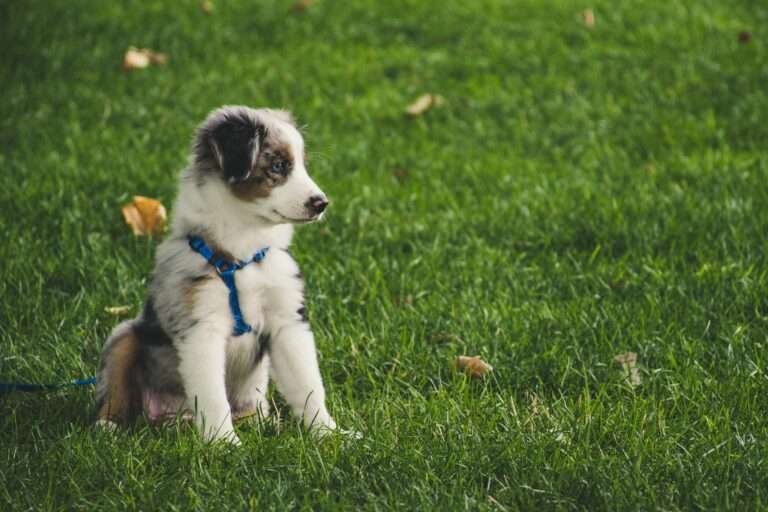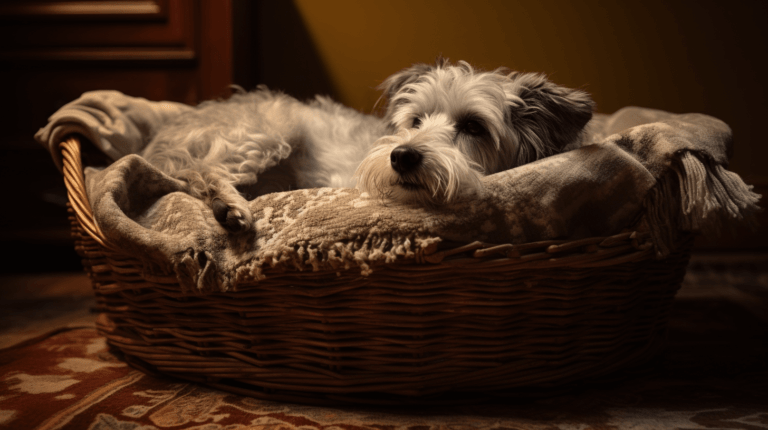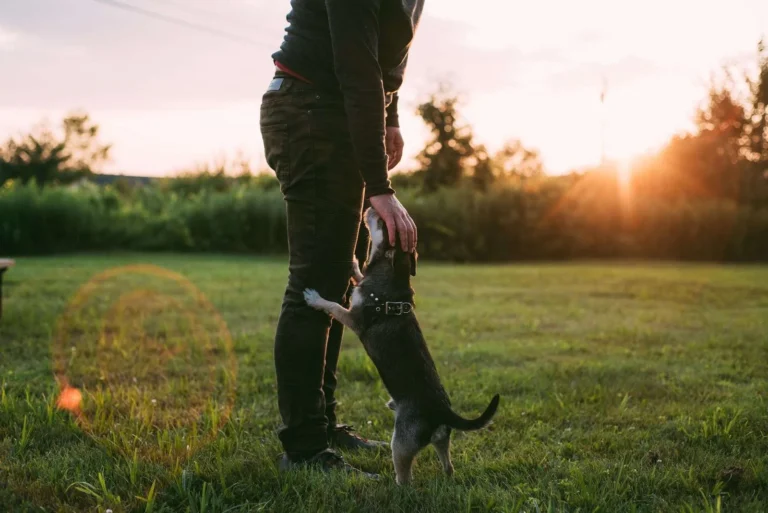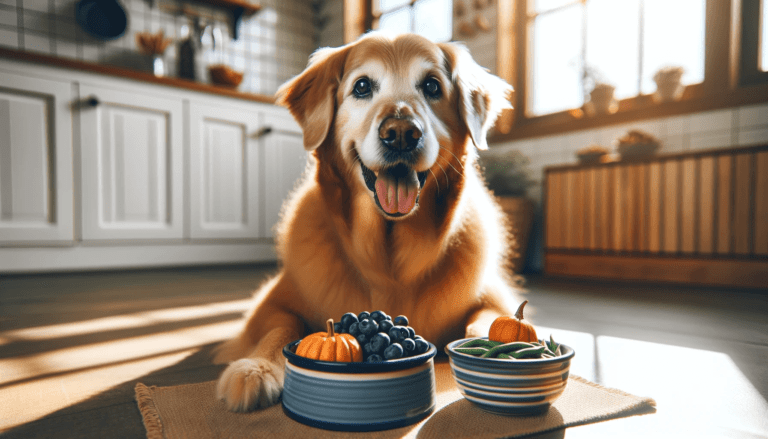How to Train an Old Dog: Teaching an Old Dog New Tricks
Help us help more people and dogs by sharing this post:
How to Train a Senior Dog
Understanding An Old Dog
Training an older dog is a journey that requires a keen understanding of their unique needs and capabilities. As dogs age, they experience several changes, both physically and mentally, which can significantly impact their learning process. This section will delve into these changes and provide insights on how to assess and adapt to your aging dog’s needs.
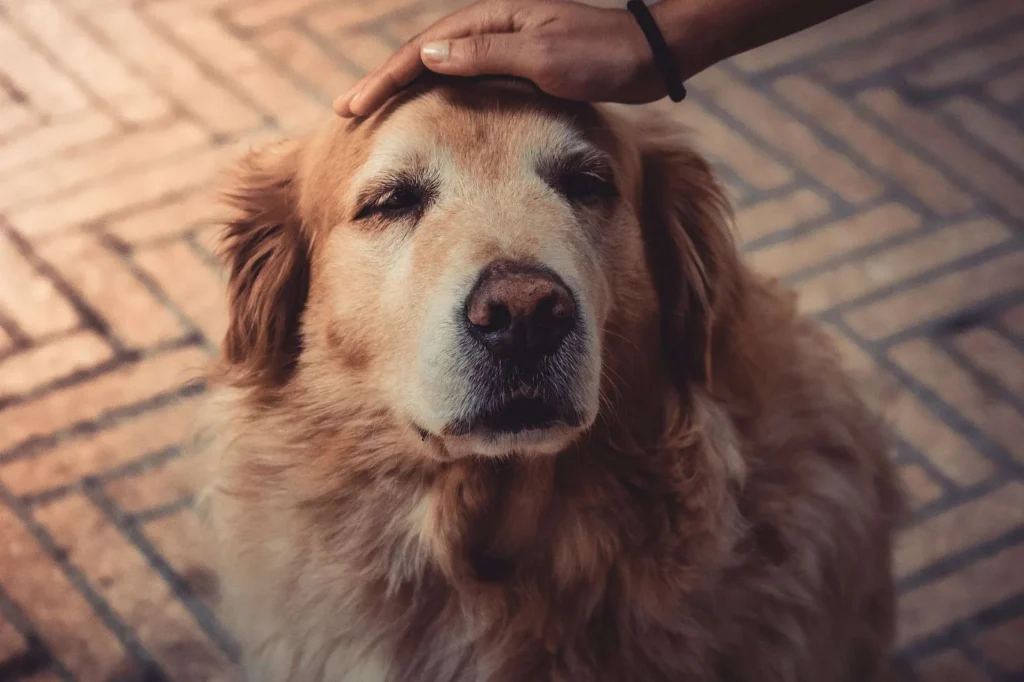
Physical and Mental Changes in Older Dogs
As dogs enter their senior years, they may face a decline in their sensory abilities, including hearing and vision loss. Many older dogs get arthritis, which can make it difficult for them to move and be uncomfortable. Moreover, cognitive functions can diminish, leading to what is often referred to as ‘canine cognitive dysfunction’, a condition similar to dementia in humans. These changes can affect an old dog’s ability to process new information and learn new behaviours.
Assessing Your Dog’s Capabilities:
Before embarking on any training programme, it’s essential to assess your dog’s physical and mental state. A thorough check-up with your local vet can provide valuable insights into your dog’s health and capabilities. Vets often suggest tailored exercises and activities that suit the specific needs of older dogs, ensuring their safety and well-being during training.
When assessing your dog, pay attention to signs of discomfort or difficulty in movement. Adjust your expectations accordingly and remember that the goal is to enhance your dog’s quality of life, not push them beyond their limits.
Also, observe your dog’s mental alertness. Are they responsive to their name? Do they follow simple commands as they used to? This assessment will help you tailor your training approach to suit their current cognitive abilities.
Training an older dog is not about teaching them to perform complex tricks or strenuous activities; it’s about strengthening your bond and ensuring they remain mentally and physically active in their golden years. By understanding and respecting their limitations, you can create a training routine that is both enjoyable and rewarding for your pet.
Preparation for Training an Older Dog

Creating an optimal training environment and choosing the right tools are essential steps in training an older dog. This section will help you prepare your home for training sessions and choose appropriate equipment for your dog’s age.
Creating a Comfortable Environment:
The environment where you train your older dog significantly influences their ability to learn and adapt. Opt for a quiet, well-lit area in your home where distractions are minimal, such as a favourite room or a peaceful spot in the garden. Familiar surroundings can help reduce anxiety and make your dog more receptive to training.
Flooring is another important consideration. Older dogs, particularly those with joint issues, may find slippery surfaces challenging. Using non-slip mats or choosing carpeted areas can provide better grip and reduce the risk of falls or injury.
Routine is crucial for older dogs. Establishing a regular training schedule can help your dog feel more secure and facilitate a smoother learning process. Consistency in training times, commands, and rewards can also aid in better retention and response.
Choosing the Right Tools and Equipment:
Selecting appropriate training aids is vital for the comfort and safety of your older dog. Traditional collars may not be suitable, especially for dogs with neck or spine issues. Instead, consider a well-fitted harness that distributes pressure more evenly and offers better control without causing discomfort.
Clicker training is a fantastic way to train an old dog – just be sure his or her hearing is up to the task!
When it comes to leads, choose one that allows for gentle guidance without sharp tugs. A lead that’s too long can be cumbersome for both you and your dog, while one that’s too short may restrict movement and increase tension. Find a happy medium that gives your dog enough freedom while still allowing you to maintain control.
The choice of treats and rewards is equally important. Opt for healthy, low-calorie treats that won’t contribute to weight gain, a common concern in older dogs. Some dogs may also have dietary restrictions because of health issues, so it’s wise to consult your vet about suitable treat options.
Remember, the tools and environment you choose should cater to your dog’s comfort and encourage a positive training experience. By creating a supportive setting, you can help your older dog learn and adapt in a way that’s both enjoyable and beneficial to their overall well-being.

Training Techniques for Older Dogs
Training an older dog requires a blend of patience, adaptability, and understanding. In this section, we’ll explore how to modify traditional training methods to suit older dogs, the importance of communication and patience, and setting realistic training goals that cater to their capabilities.
Adapting Training Methods:
The key to training an older dog is to adapt your methods to their pace and abilities. Start with short training sessions to avoid overwhelming them, gradually increasing the duration as they become more comfortable. It’s also important to keep training exercises low-impact to accommodate any physical limitations.
Positive reinforcement is incredibly effective for dogs of all ages. For older dogs, this often means plenty of verbal praise and healthy treats. Remember, what worked for your dog in their youth might not be as effective now, so be prepared to try different rewards to see what motivates them best.
Also, focus on one command or behaviour at a time. This helps prevent confusion and allows your dog to concentrate on learning each new skill thoroughly before moving on to the next.
Communication and Patience:
Understanding and responding to your dog’s non-verbal cues is crucial. Pay attention to signs of fatigue, frustration, or discomfort, and be ready to adjust the training session accordingly. If your dog seems disinterested or stressed, it might be time to take a break or try a different approach.
Patience is vital when training older dogs. They may take longer to learn new things compared to younger dogs, and that’s perfectly okay. Avoid showing frustration or disappointment, as dogs are incredibly attuned to their owner’s emotions. Your patience and positive attitude can significantly influence their willingness and ability to learn.
Specific Training Goals:
Start with basic commands like ‘sit’, ‘stay’, and ‘come’. These commands not only reinforce obedience but also strengthen your bond with your dog. Be clear and consistent with your commands, using the same words and gestures each time.
Addressing behavioural issues specific to older dogs is also important. This may include managing anxiety, reducing excessive barking, or house-training challenges that can arise in older age. Approach these issues with empathy and understanding, seeking professional advice if necessary.
Lastly, remember that the goal of training an older dog isn’t to impress others with their skills but to enhance their quality of life and strengthen your relationship with them. Celebrate even the small successes, and enjoy the process of learning and growing together.
Health, Diet, and Exercise Considerations when Training Older Dogs
When training an older dog, it’s important to consider their overall health, diet, and exercise needs. This section will cover how to incorporate these aspects into your training plan to ensure your dog remains healthy and happy throughout their senior years.
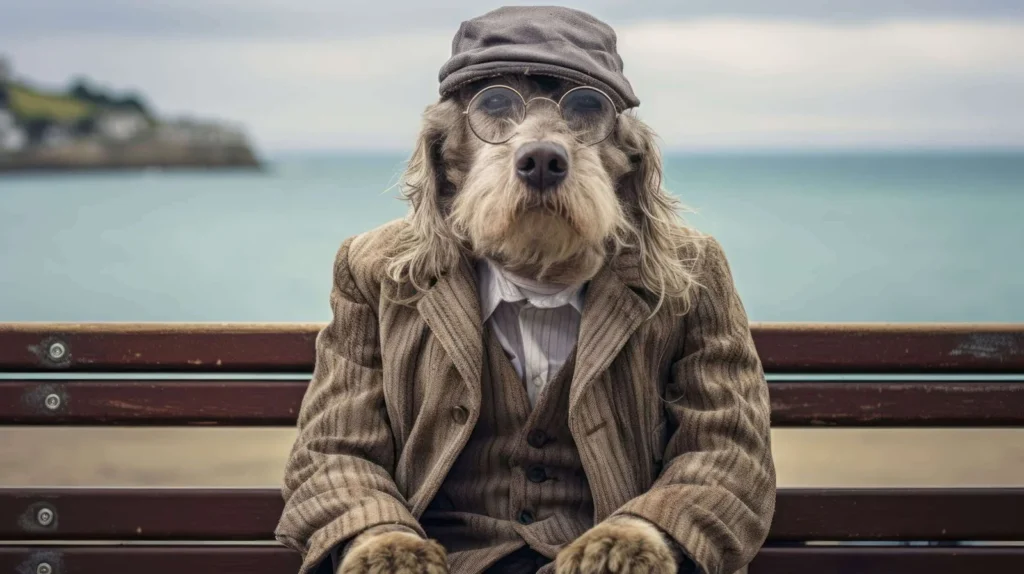
Nutrition for an Older Dog:
A well-balanced diet is crucial for maintaining the health of an older dog, especially during training. As dogs age, their metabolic rate often decreases, and their nutritional needs change. It’s important to feed them a diet that’s tailored to senior dogs, which typically includes lower calorie content to prevent weight gain and specific nutrients to support joint health and cognitive function.
During training, use treats judiciously. Opt for healthy, low-calorie options, and remember to account for these treats in your dog’s daily calorie intake to avoid overfeeding. Some dogs may have dietary restrictions due to health conditions like diabetes or kidney issues, so it’s wise to consult with your vet to choose the most appropriate treats.
Exercise and Physical Activity:
Exercise is as important for older dogs as it is for younger ones, but it needs to be appropriate for their age and physical condition. Regular, gentle exercise helps maintain muscle tone, flexibility, and overall health. However, it’s important to recognise the signs of overexertion, such as heavy panting, lagging behind, or reluctance to move.
Walking is a great low-impact exercise for older dogs. Keep walks short and leisurely, allowing your dog to set the pace. If your dog enjoys playing, gentle games that don’t require excessive running or jumping can be a good way to keep them engaged and active.
Swimming can also be a great option for older dogs, as it’s a low-impact exercise that doesn’t put strain on the joints. Always ensure safety first, especially if your dog isn’t a confident swimmer.

Remember to provide ample rest periods both during and after exercise. As with training, consistency is key, so try to establish a regular exercise routine that fits comfortably into your dog’s day.
Balancing Activity with Rest and Recovery
As dogs age, they typically need more rest. Ensure your dog has a comfortable, quiet place to sleep and recover after training and exercise sessions. Pay attention to their sleeping patterns and make adjustments to their exercise and training schedule if they seem more tired than usual.
Regular vet check-ups are important to monitor your dog’s health, especially as they age. This is particularly crucial when you’re engaging them in a new training or exercise routine. Your vet can provide valuable advice on managing your dog’s health and activity level to keep them fit and happy.
Overcoming Challenges and Setbacks Older Dogs May Experience
Training an older dog can come with its own set of challenges and setbacks. This section focuses on how to navigate these obstacles effectively, ensuring a positive and productive training experience for both you and your dog.
Dealing with Common Training Setbacks
It’s not uncommon to encounter resistance or a lack of progress during training sessions with an older dog. The key is to identify the root cause of these setbacks. Are they related to physical limitations, lack of motivation, or perhaps misunderstanding the command? Once you understand the underlying issue, you can adjust your training approach accordingly.
For instance, if your dog is having difficulty with a certain command because of physical limitations, consider modifying the command or finding an alternative that achieves the same goal. If motivation is the issue, experiment with different types of rewards, such as favourite toys or extra cuddle time, to see what best motivates your dog.
Remember, setbacks are a normal part of the training process, especially with older dogs. Patience and perseverance are crucial. Celebrate small victories and progress, no matter how minor they may seem.
Adapting to Health-Related Training Limitations
As dogs age, they may develop health issues that can impact their ability to train. It’s important to be mindful of these limitations and adapt your training methods to accommodate them. For example, if your dog suffers from arthritis, avoid commands that require a lot of physical exertion, like jumping or extensive running.
Always keep your dog’s comfort and well-being in mind. If a particular training session seems to cause discomfort or distress, it’s better to end the session and try again another day.
Seeking Professional Help
There may be instances where professional assistance is needed. If you’re struggling to make progress or if your dog exhibits behavioural issues that you find challenging to manage, it might be time to consult a professional dog trainer or behaviourist.
Professional trainers can offer personalised advice and techniques tailored to your dog’s specific needs and challenges. They can also provide support and guidance to help you navigate the training process more effectively.
Lastly, never underestimate the importance of regular veterinary care. Your vet can offer invaluable advice on managing age-related health issues and ensuring that your training regimen is appropriate for your dog’s physical condition.
Final Thoughts
Training an older dog is an opportunity to deepen the bond you share with your friend and enhance their quality of life in their old age. The process requires patience, empathy, and an understanding of the physical and mental changes that come with ageing.
Remember, success in training an older dog isn’t measured by the number of tricks they can perform or how quickly they learn. Instead, it’s about the joy and satisfaction found in spending quality time together, the small improvements you see day by day, and the comfort and happiness you bring to your aging pet.

It’s also a reminder of the resilience and adaptability of our pets, even in their later years. They may be slower, and their faces may be greyer, but their capacity for love and companionship remains unchanged.
Celebrate every small victory and cherish each moment spent with your older dog. Training an old dog can be a rewarding adventure, filled with moments that you’ll both treasure.
If you’d like to make your thoughts known, or have any advice to offer – please leave a comment in the section at the bottom of this page. It would be welcomed.
Help us help more people and dogs by sharing this post:
